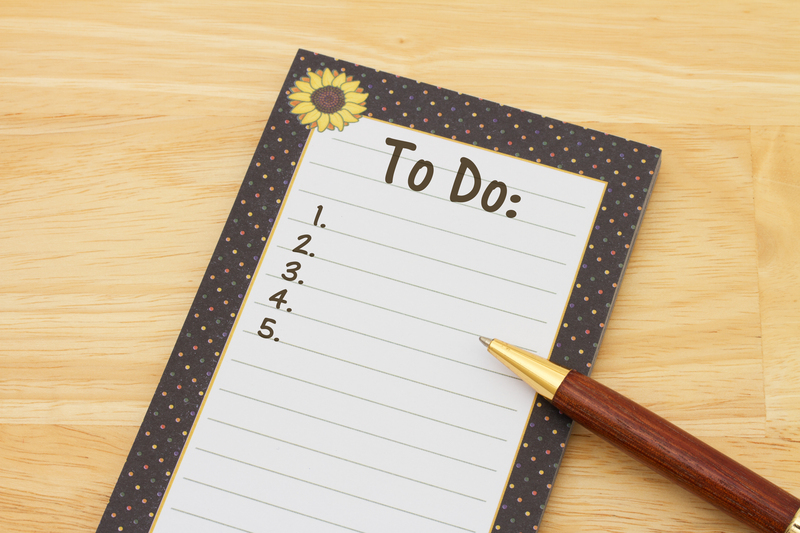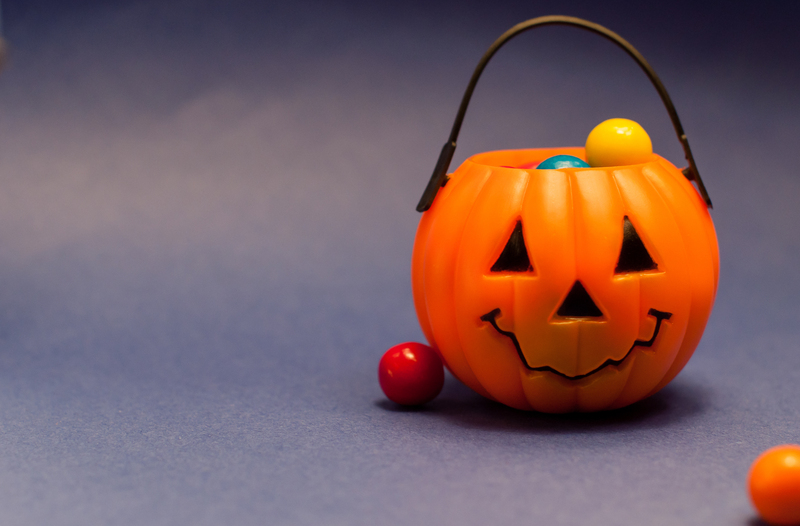Maintain a Healthy, Mold-Free Bathroom with Ease
Posted on 25/06/2025
Maintain a Healthy, Mold-Free Bathroom with Ease
Is your bathroom constantly plagued by mold and mildew? Discover proven methods to maintain a healthy, mold-free bathroom--from daily cleaning habits to expert prevention tips.
Why is Mold a Problem in Your Bathroom?
Bathrooms are particularly prone to harboring mold due to their high humidity, warmth, and frequent water exposure. Mold growth isn't just unsightly--it can damage your property and pose serious health risks, especially for those with allergies, asthma, or respiratory conditions. In this article, you'll learn the best strategies for preventing mold in your bathroom with minimal effort.

Understanding Mold: What Causes Mold Growth in Bathrooms?
Before tackling the solution, it's vital to understand the root of the problem. Mold is a type of fungus that thrives in damp, warm, and poorly ventilated environments. Bathrooms offer the perfect breeding ground for mold because:
- Steam from showers or baths increases humidity and moisture.
- Poor ventilation traps moisture, allowing mold spores to settle.
- Leaky faucets or pipes create constant wet spots.
- Porous surfaces (grout, caulking, drywall) absorb and retain moisture.
Preventing bathroom mold growth is simple when you address these sources of moisture and promote airflow.
Effective Strategies: How to Prevent Mold in Your Bathroom
1. Maximize Ventilation and Airflow
The number one defense against bathroom mold is promoting air circulation. Keep moisture levels low by:
- Using your exhaust fan: Turn on the bathroom fan every time you shower or bathe, and leave it running for at least 20 minutes afterward.
- Opening windows & doors: Whenever possible, crack a window, especially after hot showers, to help fresh air circulate.
- Leaving the shower curtain and bathroom door open: This expedites the drying process and disperses steam quickly.
- Installing a dehumidifier: Especially helpful for windowless bathrooms, a quality dehumidifier keeps humidity below 50%.
2. Eradicate Leaks and Drips
Tackle leaks immediately! Even a slow drip can saturate your bathroom surfaces, paving the way for persistent mold growth.
- Inspect under sinks and around the toilet regularly for leaks.
- Fix cracked grout or caulking along tubs and showers.
- Replace leaky fixtures promptly to prevent long-term moisture buildup.
Quick action will save you major headaches and expenses in the future--and keep your bathroom mold-free.
3. Master Routine Cleaning and Maintenance
A consistent cleaning schedule prevents soap scum and organic matter from feeding mold. Keep your bathroom healthy and mold-resistant by:
- Scrubbing tiles, grout, and shower curtains weekly. Use a mild bleach solution or white vinegar spray to kill mold spores.
- Wiping down walls and glass after every shower.
- Washing bath mats, towels, and shower curtains in hot water weekly.
- Emptying trash cans and clearing out damp items promptly.
Consistency is key. Incorporate these bathroom cleaning hacks and you'll minimize the time spent battling mold.
4. Choose Mold-Resistant Materials
When renovating or updating your bathroom, opt for mold-resistant paints, grout, and building materials. Some excellent choices include:
- Mold-inhibiting drywall and backing boards
- Sealed or epoxy grout vs. regular cement-based grout
- High-gloss, mold-resistant paints and waterproof wall panels
- Glass shower doors instead of curtains
Using these materials significantly reduces the risk of mildew and black mold establishing a foothold in your bathroom.
5. Control Humidity Levels
Maintaining the ideal humidity (30-50%) is crucial for a healthy, mold-free bathroom. Here's how:
- Install a hygrometer (humidity gauge) to monitor moisture.
- Run a dehumidifier, especially after showers.
- Wipe down wet surfaces immediately after use (mirrors, walls, counters).
These small steps can dramatically reduce mold's chances to thrive.
How to Remove Mold from your Bathroom Quickly and Safely
DIY Mold Removal: Step-by-Step Instructions
Already noticed black spots or visible mold in your bathroom? Act fast! Follow these safe removal steps:
- Ventilate the area. Turn on the fan and open windows to disperse fumes and spores.
- Protect yourself. Wear gloves, a mask, and long sleeves to avoid breathing in spores or direct skin contact.
- Mix a cleaning solution. Combine 1 part bleach with 10 parts water (or use white vinegar for a natural solution).
- Scrub the affected surfaces thoroughly with a stiff brush. Focus on grout lines, caulk, and corners where mold hides.
- Rinse with clean water, then dry completely. Use towels or a squeegee to remove moisture.
- Dispose of cleaning materials responsibly to avoid spreading spores.
Note: If mold covers an area larger than 10 square feet or keeps returning after cleaning, consult a professional for remediation.
Natural Mold Cleaning Solutions
Prefer to avoid chemicals? Try these eco-friendly alternatives to maintain a healthy, mold-free bathroom:
- White vinegar: Kills 80% of mold species on contact. Spray full-strength and let sit before scrubbing and rinsing.
- Baking soda and water paste: Apply to grout and stubborn spots. Let sit, then scrub and rinse.
- Hydrogen peroxide (3%): Has antifungal properties, great for tough stains. Spray, let fizz, then scrub away.
These simple ingredients are safe and effective for frequent use.
When Should You Call a Professional?
If your bathroom suffers from extensive mold or water damage, or if anyone in your household has serious allergies or respiratory issues, professional remediation is the safest course of action. Mold that penetrates drywall, insulation, or subfloors requires expert removal to prevent structural and health risks.
Smart Bathroom Design Tips to Prevent Mold for Good
Building or remodeling? Integrate these bathroom design strategies to avoid mold:
- Install a powerful, quiet bathroom exhaust fan with a humidity sensor.
- Use large tiles and minimal grout lines for easier cleaning.
- Choose glass shower enclosures and waterproof surfaces over shower curtains and porous materials.
- Opt for open shelving or floating vanities to improve air circulation and prevent dark, damp corners.
- Integrate waterproof LED lighting to avoid overheating and moisture buildup around bulbs.
These upgrades make bathroom cleaning easier and minimize mold-prone areas, helping you maintain a clean, healthy space with little extra effort.

FAQs: Maintaining a Mold-Resistant, Healthy Bathroom
- How often should I clean my bathroom to prevent mold?
- Light cleaning (wiping surfaces, drying walls) after every shower.
- Deep cleaning (scrubbing grout, floors, and fixtures) at least once a week.
- What is the best cleaner for bathroom mold?
- Bleach solution (1 part bleach, 10 parts water) kills visible mold.
- White vinegar and hydrogen peroxide are effective natural alternatives.
- Can mold in the bathroom cause health issues?
- Yes, especially for those with allergies, asthma, or weak immune systems. Long-term exposure can aggravate respiratory symptoms.
- What humidity level should I keep in my bathroom?
- Below 50% to discourage mold and mildew growth.
- How can I stop shower curtains from getting moldy?
- Spread them out after use to dry, and wash them weekly on hot.
- Consider switching to a glass door for easier maintenance.
Conclusion: Enjoy a Healthier, Mold-Free Bathroom with Ease
Keeping your bathroom healthy and mold-free doesn't have to be a chore. With proactive ventilation, sensible cleaning routines, smart material choices, and prompt repairs, you can easily prevent mold growth and protect your family's health.
Remember: Moisture control is mold control. Use the practical tips above, and enjoy a fresh, healthy bathroom--mold-free, clean, and welcoming--for years to come.
For more household health and maintenance advice, check out our other guides on home improvement and wellness!




